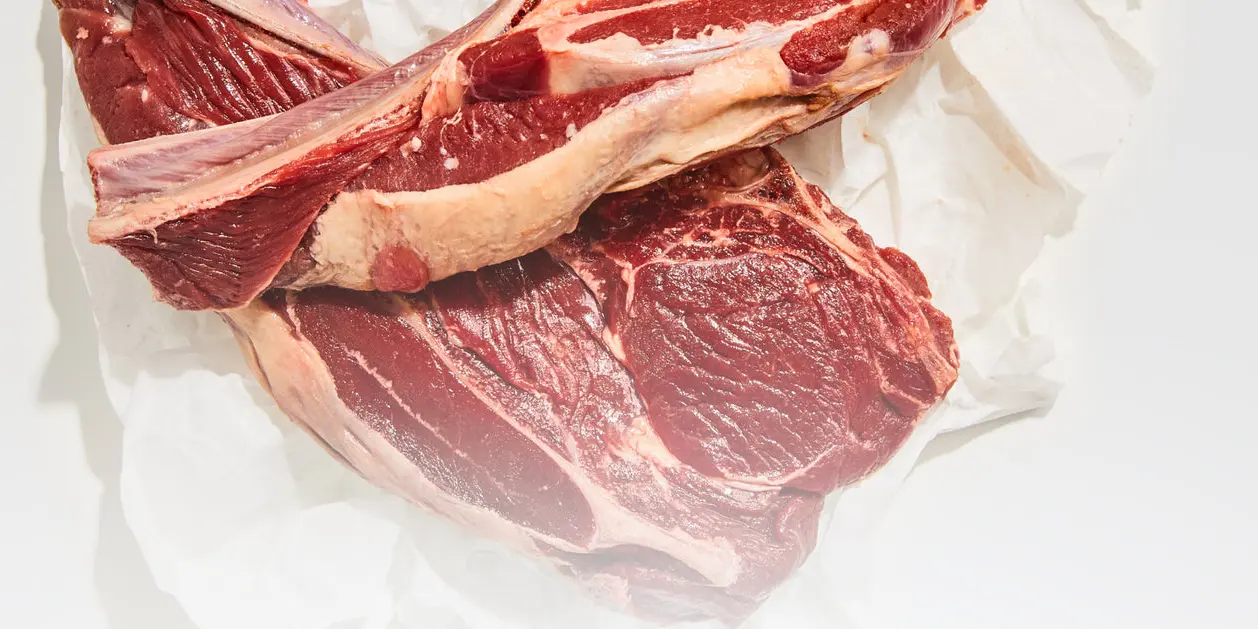
The Shoulder Blade
Success Guide
Cook Time & Temps
Pan-Sear
2–3 min. per side on medium-high heat
Turn heat down to medium and cook for another 3–4 minutes, flipping often
Prep
Serving size: 1 pack includes 2 chops and serves 2.
Preferred seasoning: A simple seasoning of salt and pepper is all you need to bring out the meat's natural flavor. Start by using a method called dry salt brining—which can be done at least 1 hour before cooking or up to 24 hours beforehand. Completely pat dry your meat and lightly coat it with either kosher or sea salt on all sides— about ½ tsp per 1 pound cut Shoulder Blade Chop. Place it on a baking rack over a sheet pan and in the refrigerator uncovered. Air circulation will allow the salt to absorb into the meat—making a flavorful crust when seared! It’s a simple process perfect for all meats. When you’re ready to cook, season with black pepper or other non-salt-based seasonings—It’s important NOT to add any more salt after this step.
Choosing a fat: Cook with a good amount of fat to add moisture; choose oil or fat with a high smoking point necessary for a good sear—ghee butter or rendered fats like lard or tallow. (Butter Basting Technique)
Preferred Method
- Pat the shoulder blade completely dry and have your garlic cloves, herbs, and butter ready.
- Start by pre-heating a large cast-iron skillet over medium-high heat for 3–5 minutes.
- Once the pan is hot, add 2–3 tbsp of oil/fat.
- As soon as the oil is ripping hot, place the chops in the pan, and sear undisturbed for about 2 minutes per side—this will help seal in all those delicious flavors and build a beautiful golden crust!
- It will get smoky but don't worry, adjust heat to medium, and add more oil/fat if pan is dry.
- Cook for another 3–4 minutes, flipping the chops often to ensure even cooking- for a total cooking time of about 8–10 minutes.
- In the last 1–2 minutes of cooking, drop the heat to low and add a few tablespoons of butter, fresh herbs, and garlic.
- Finish by basting butter over the chops with a spoon.
- Keep in mind it will continue to cook once you remove the meat from the pan. Let the meat rest for at least 5 minutes before cutting into it.
Gauging Doneness
To check doneness use a digital meat thermometer. Aim to remove the chops from the pan at an internal temperature around 135°–140° for medium doneness.
*Extra Searing Tips
Some key things to keep in mind for a proper sear:
- Pat each chop dry—this helps keep it from steaming instead of searing.
- Make sure the pan is hot—add the meat when the oil starts to shimmer and smoke just slightly.
- Avoid overcrowding the pan and leave a few inches of space between the pieces of meat—if necessary, cook meat in smaller batches. This also ensures even cooking and prevents crowded meat from steaming instead of searing.
- Once you put the meat in a pan, let it be. The meat needs a few minutes of uninterrupted contact to sear properly—it will actually stick to the bottom of the pan at first and then release naturally when seared.